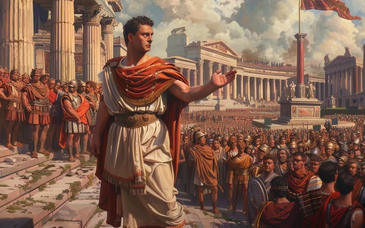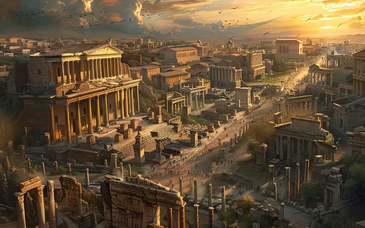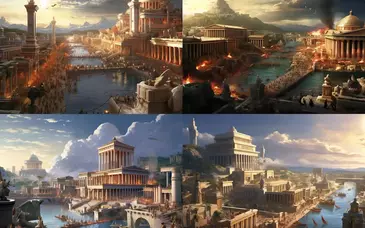The patricians not only administered the law, the magistrates (consuls) themselves were the only authority who could declare what the law was. The next plebeian demand therefore was for a published written code. In 451 BC a commission of ten men, the Decemviri, was appointed as a temporary government, to refine, standardize and record a statutory code of law. The result, known as the Twelve Tables, was engraved in copper and permanently displayed to public view. The tables constituted a clear set of rules for public, private and political behaviour.
If a thief was a freeman, he was to flogged and bound over to the plaintiff. If he was a slave he was to be flogged and thrown off the Tarpeian Rock. Other laws ruled over hygiene and fire-hazards. No burials or cremations were allowed within the city limits. The upkeep of roads was deemed the responsibility of those on whose property they bordered. There was a statutory maximum rate of interest. Anyone adjudged to be a debtor was given thirty days to pay, after which he could be sold into slavery by his creditors.
It was an offence to cast or have cast any spells on someone. Also to demonstrate in the streets against an individual (instead of for or against a cause) was forbidden. You could remove any part of a neighbour's tree which overhung your property.
There was a fixed penalty for assault, which was reduced if the victim was a slave. Stealing crops was a capital offence, so was slander (by clubbing to death). According to Pliny the Elder (a chronist of the time) the penalty for murder was less than that for stealing crops.
There was a distinction between an intentional and an accidental killing. The father had to right to kill his deformed child.
The Roman code lasted as long as the Roman Empire itself. Though more importantly, it was the first time that written code was put down which applied right across the social scale from the patricians to the plebeians. The Twelve Tables are generally seen as the beginning of European law.
The decemvirate was renewed, attempted to establish itself as a permanent dictatorship, and was overthrown in a popular revolt.
Soon the conflict of orders was to be two-fold. The wealthier influential commoners resented the social and political privileges of the patrician families. The poorer meanwhile felt only that the law was being consistently wrested to their detriment for the convenience of the patricians, especially laws under which land owned or acquired by the state, the ager publicus, were distributed.
The plebeians united to demand reform in both direction, but had no machinery to give effect to its wishes except the clumsy tribunate and the emphasizing of popular sentiment in the formal resolutions - which had no force except for expression of opinion - of its own assemblies.



